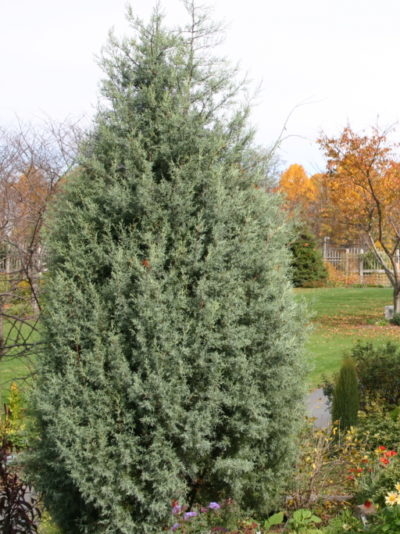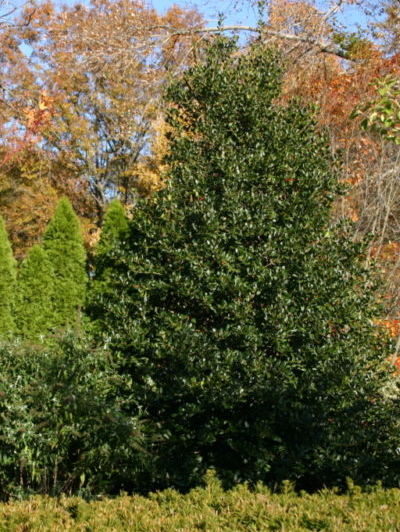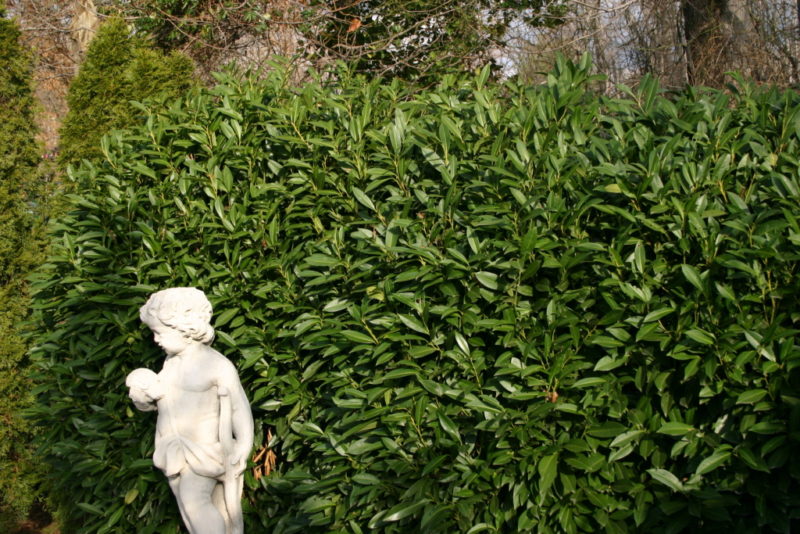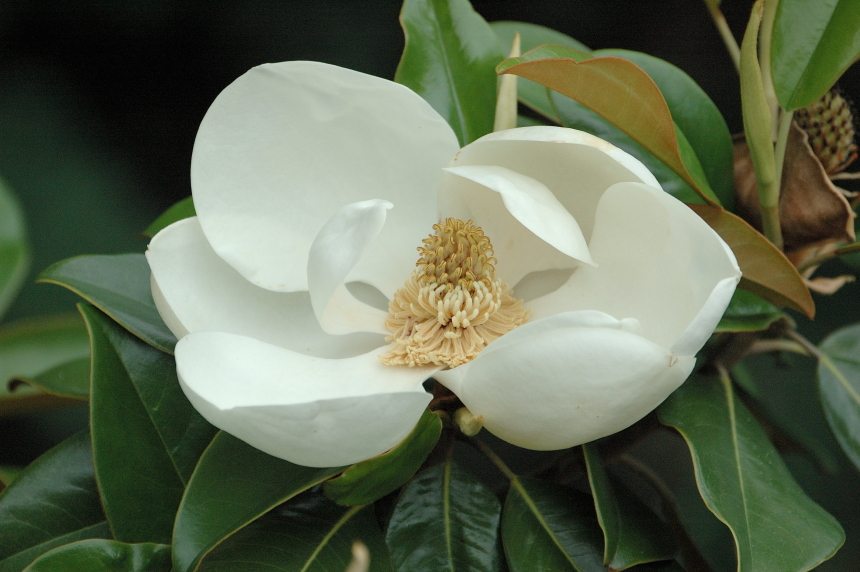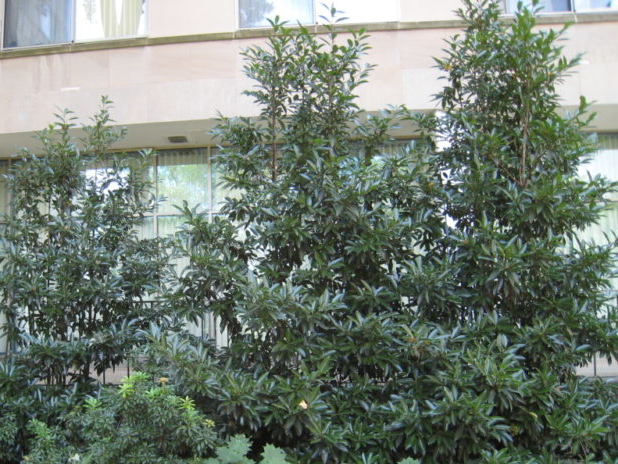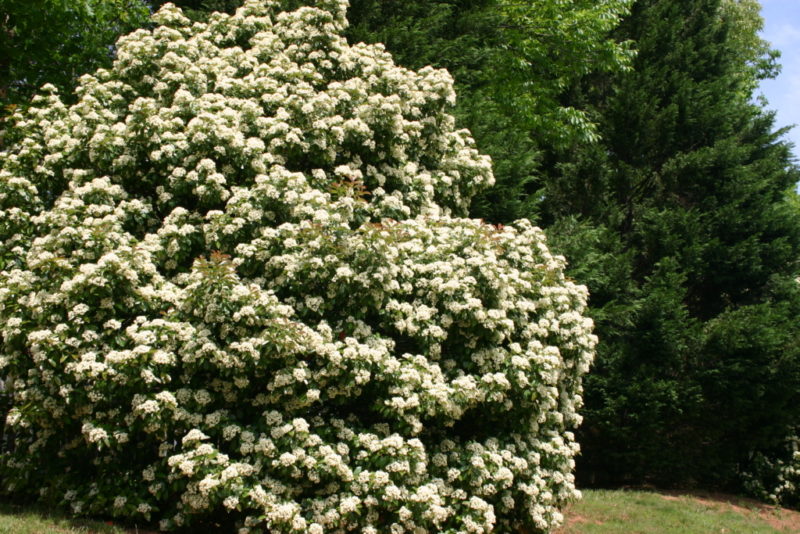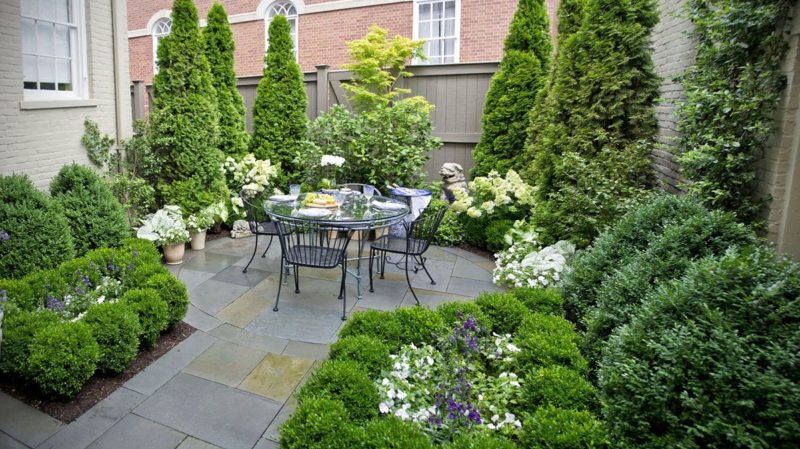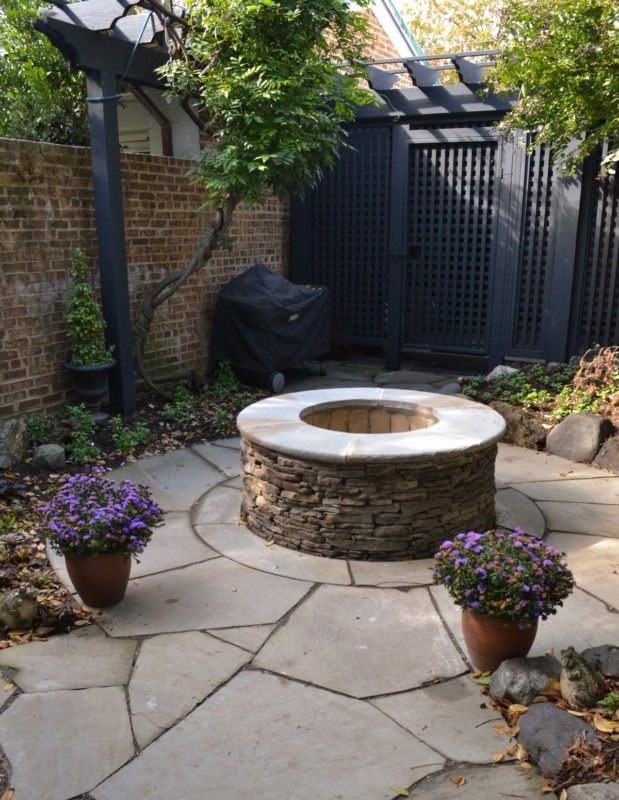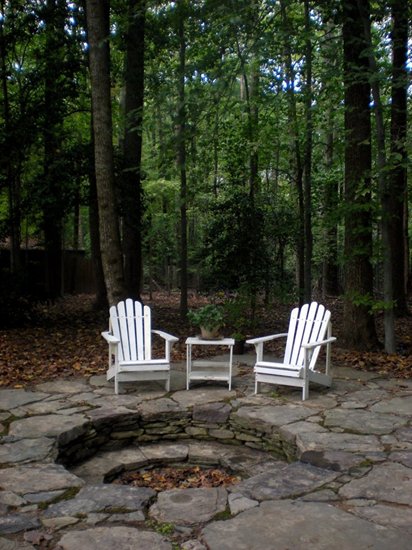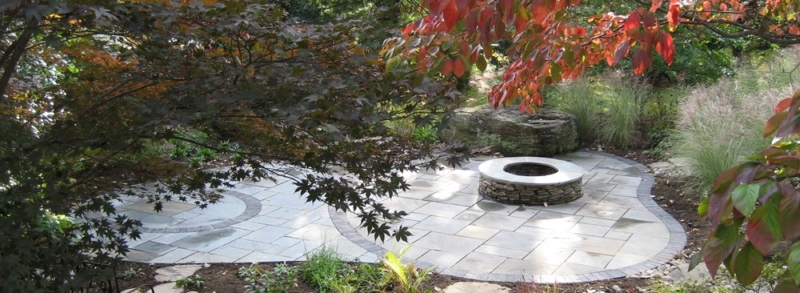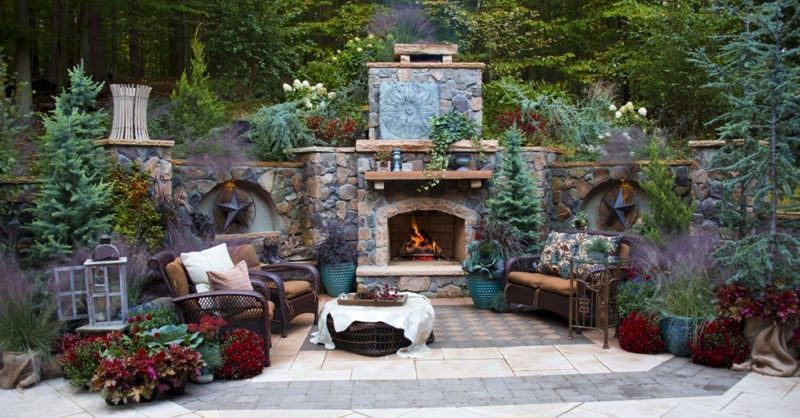Great Trees and Shrubs for Screening
This post was originally published in July of 2015 and was updated January 3, 2018.
Trees
American Arborvitae
‘Emerald’, which matures to about 15’ tall and 4’ wide; ‘Nigra’, 15’ x 5’; and ‘Pyramidal’, 20’ x 8’ are three of our most popular varieties. Great for our Washington, D.C., metropolitan area, these varieties display dense, dark green foliage that is soft textured. They maintain good winter color.
Cryptomeria
As a young tree, cryptomeria has a very dense, full growth that begins to open up into a more irregular, graceful form with age. It matures to a height of 50’ – 60’ and a spread of 20’ – 40’. An elegant tree with attractive red bark, cryptomeria can be used as a specimen or to create privacy. Cryptomeria should be planted in full sun. Growing 30’ – 40’ tall, ‘Yoshino’ is the most popular type.
Eastern Red Cedar
Native to the mid-Atlantic region, Eastern red cedar is a narrow, evergreen tree that can mature to 25’ to 35’ tall. The dense and pyramidal form becomes slightly pendulous with age. Male plants have gold cones and female plants have blue cones that birds love. The two paired together are quite attractive in the landscape.
Foster’s Holly
Some homeowners are smitten with Foster hollies, which feature small, fine-textured leaves and narrow, upright growth. Their dense growth, dark green foliage and bright red berries make them an excellent choice for privacy screens. They mature to a height of 20’ – 30’, but with routine pruning they can be easily kept to a height of 12’ – 15’.
Giant (Western) Arborvitae
Native to the Pacific Northwest, this is often sold as ‘Green Giant’. Because of its fast rate of growth and soft-textured foliage, the variety ‘Green Giant’ is often promoted as an alternative to Leyland cypress. ‘Green Giant’ will grow 30’ – 40’ tall with a spread of 10’ – 12’. This tree has better resistance to deer than other arborvitaes or Leyland cypress.
Leyland Cypress
A hybrid tree that originated in Wales in 1888, Leyland cypress has exploded in popularity over the past 30 years. This tree grows very rapidly, and is capable of growing 3’ a year or more until reaching maturity at 25’ – 35’ tall and 10’ wide. It requires full sunlight and appreciates a bit of protection from harsh winter winds. Moist, well-drained soil conditions are ideal, although this tree will adapt to heavy clay
Nellie R. Stevens
A very popular, vigorous, hybrid holly that grows into a broad pyramidal form. It can mature to 25’ tall, but like all hollies it responds well to pruning and can be cut back in early spring if necessary. The berries are prolific with an orange-red color. Nellie Stevens withstands harsh, exposed environments better than other hollies.
Skip Laurel
This is a widely planted, versatile shrub that is suitable for many different situations. It will grow in full sun or full shade, preferring something in between. The white flowers appear in late April or May, and are attractive, but considered secondary to the glossy, dark-green leaves. Skip laurel will grow 8’ or more tall and 4’ – 6’ wide, but can easily be shaped by occasional pruning.
Southern Magnolia
Prized for its glossy green leaves and fragrant white flowers, this is a great specimen tree that can also be used for screening. ‘Little Gem’ is a compact variety that grows to 20’ or more tall and about 8’ wide. Planting them in a location protected from harsh winter winds is best.
Shrubs
Shrubs
Chindo Viburnum
Similar to Southern Magnolia, chindo viburnum features leather-like, shiny green leaves. This evergreen shrub makes a good hedge because it is very dense with a pyramidal form. New growth often has a red hue.
Leatherleaf Viburnum
One of the few evergreen viburnums that can be grown in our area, leatherleaf viburnum features deeply wrinkled, tough textured leaves that are very interesting. The white flowers are attractive and the berries are bright red. Planting viburnum in groups will improve berry production.
Red Tip Photinia
This popular shrub boasts bright red growth that lasts a few weeks before maturing to green. Small white flowers appear in the spring and are followed by red berries. It grows to a height of 10 to 15 feet tall and 5 to 8 feet wide. Plant in full sun to partial shade with good air circulation.
Waxleaf Privet
Waxleaf privet makes an excellent screening plant. Although it matures to a height of 12 to 15 feet, it can tolerate severe pruning. This shrub has a profusion of white blooms, black berries and glossy, green foliage.



